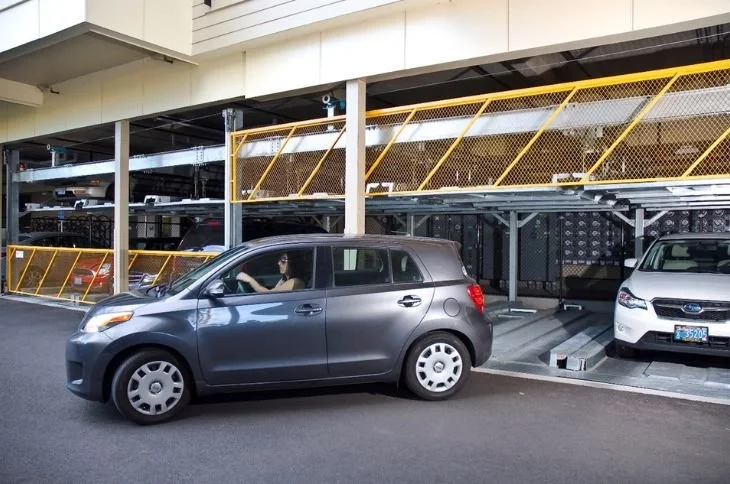Smart cities seek to enhance urban living by improving efficiency, reducing their environmental impact, and utilizing modern technology. Robotic parking systems offer a promising solution to maximize space and safety, benefiting smart cities by creating safer parking conditions, reducing traffic, and increasing efficiency. Delve deeper into the reasons why smart cities benefit from robotic parking and learn how your community could benefit from this technology.
Helps Cities and Businesses Save Space
Space is a commodity in densely populated urban areas. Traditional parking lots and structures occupy large spaces and feature inefficient designs. Robotic parking systems make optimal use of limited space. These systems can accommodate significantly more cars in a smaller area compared to a traditional parking lot or garage by mechanically stacking vehicles with fully or semi-automated parking equipment.
Moreover, cities can build robotic parking facilities above or below ground, reducing their spatial footprint. Doing so enables cities and businesses to maximize the available urban space for attractive and functional purposes, such as parks, pedestrian-friendly zones, and other public amenities.
Promotes Safer Parking Conditions
Robotic parking systems ensure safer parking for drivers and pedestrians. With fully and semi-automated parking and retrieval, cities can reduce the risk of accidents resulting from human error. These facilities also protect drivers from security risks and criminal activity as they don’t need to walk through them to access their cars after parking. These systems offer enhanced safety through better lighting and surveillance cameras and reduce the potential for accidents and crime, making urban environments safer.
Reduce Traffic, Increase Efficiency
Traffic congestion caused by drivers searching for parking spots is one of the most significant challenges cities face. Smart cities can help alleviate this problem by using robotic parking systems. These systems offer drivers the convenience of quickly and efficiently parking their cars, reducing their time spent searching for a spot and contributing to better traffic flow.
Additionally, robotic parking systems can connect to city networks, allowing facilities to share real-time data on parking availability. By using this information, drivers can avoid congested areas and reduce overall traffic volume.
Promotes Environmental Sustainability
The smart city model promotes environmentally sustainable practices, including robotic parking systems. These systems minimize emissions by reducing idle time and travel distance within the facility and reducing traffic congestion and harmful emissions in urban areas. They are energy efficient, using electric-powered machinery for vehicle storage and retrieval, reducing fossil fuel consumption. Additionally, robotic parking systems create space for more green areas, promoting sustainable city development.
Now you can understand why smart cities benefit from robotic parking. Promoting safer parking conditions, reducing traffic congestion, and fostering environmental sustainability—these systems align with smart city goals. Learn more about fully and semi-automated parking systems at Harding Steel if you’re interested in implementing robotic parking systems for better conditions in your municipality or individual facility. We offer a variety of robotic parking models to complement smart city plans everywhere.

